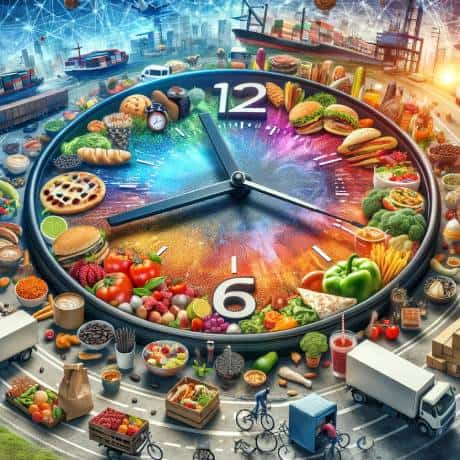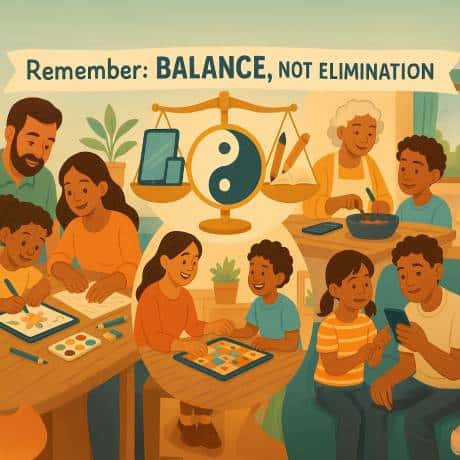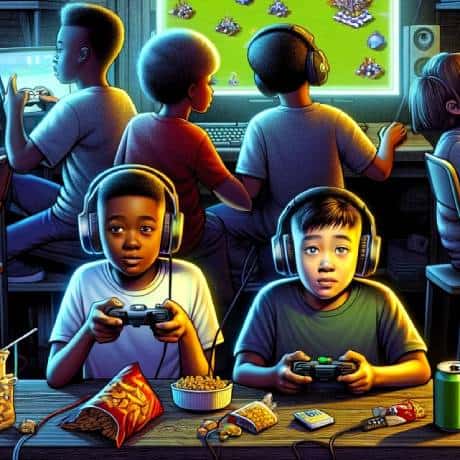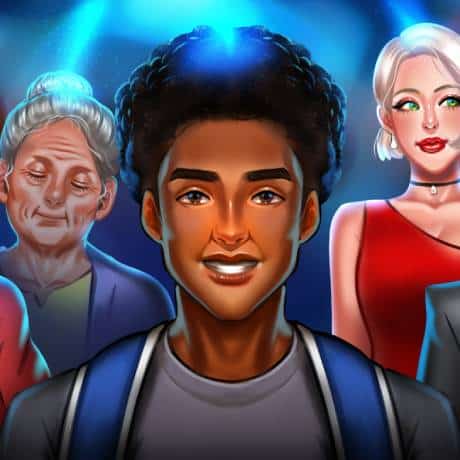Rising Above Divisions: We are all Connected in a Fractured World
Author:
 |
Lionel Thomas Father, Gamer and Founder with a Passion for Health, AI, Environment and Gamification of Life. |
Author Tools:
- Grammarly (Spelling and Grammar)
- ChatGPT (Content Enhancements & Research)
- GSpeech (Audio by AI)
- Other Tools (AI)...
Artists:
- Roy Wibowo (Header)
- Lionel Thomas using MidJourney [AI Generated] (Content)
References:
-
1. Global Consciousness Project (GCP)
https://noosphere.princeton.edu/
The Global Consciousness Project (GCP) is an international, multidisciplinary collaboration of scientists and engineers that explores the relationship between human consciousness and the physical world using random number generators (RNGs). The project was established in 1998 by Dr. Roger Nelson from the Princeton Engineering Anomalies Research (PEAR) Lab at Princeton University.
For more information about the Global Consciousness Project and its findings, you can visit the website: http://global-mind.org/ or refer to the following published work:
Nelson, R. D., Radin, D. I., Shoup, R., & Bancel, P. A. (2002). Correlations of continuous random data with major world events. Foundations of Physics Letters, 15(6), 537-550.
This paper presents an overview of the GCP’s methodology, data analysis, and results related to correlations between RNG outputs and major world events.
-
2. The Intention Experiment by Lynne McTaggar
https://lynnemctaggart.com/
The Intention Experiment is a series of scientifically controlled experiments initiated by author Lynne McTaggart to investigate the power of group intention on physical and biological systems. McTaggart is known for her best-selling books “The Field” and “The Intention Experiment,” which discuss the science behind the intention and its potential effects on the world around us.
McTaggart, L. (2007). The Intention Experiment: Using Your Thoughts to Change Your Life and the World. Free Press.
This book delves into the science of intention, exploring the evidence and experiments that support the idea that our thoughts can influence physical reality. It also describes the Intention Experiment project and its various studies, which involve participants focusing their intention on specific targets to observe the potential effects.
Please note that the findings of this specific experiment have not been published in a peer-reviewed journal, and the information provided here is based on the author’s account in her book.
-
3. Loving-kindness meditation increases social connectedness.
American Psychological Association
http://dx.doi.org/10.1037/a0013237
Hutcherson, C. A., Seppala, E. M., & Gross, J. J. (2008). Loving-kindness meditation increases social connectedness. Emotion, 8(5), 720-724.
-
4. The functional role of the parieto-frontal mirror circuit: interpretations and misinterpretations
Nature
https://www.nature.com/articles/nrn2805
Here is a reference to a review paper that provides an overview of mirror neurons and their implications for understanding human social cognition and empathy:
Rizzolatti, G., & Sinigaglia, C. (2010). The functional role of the parieto-frontal mirror circuit: interpretations and misinterpretations. Nature Reviews Neuroscience, 11(4), 264-274.
This review article by Rizzolatti and Sinigaglia, two prominent neuroscientists in the field of mirror neurons, discusses the functional role of the parietal-frontal mirror circuit in the brain. The authors address the implications of mirror neurons for understanding various aspects of human social cognition, including empathy, imitation, and the ability to understand the intentions and emotions of others. By providing insights into the neural mechanisms underlying these social abilities, the article highlights mirror neurons’ significance in establishing humanity’s interconnectedness.
-
5. The Role of Positive Emotions in Positive Psychology
National Library of Medicine
https://www.ncbi.nlm.nih.gov/pmc/article...
Fredrickson, B. L. (2001). The role of positive emotions in positive psychology: The broaden-and-build theory of positive emotions. American Psychologist, 56(3), 218-226. doi:10.1037/0003-066X.56.3.218
-
6. Observer effect
Wheeler, J. A., & Zurek, W. H. (Eds.). (1983). Quantum Theory and Measurement. Princeton University Press.
Summary:
The "Observer Effect" is a term commonly used in quantum mechanics to describe the phenomenon where the act of observation or measurement alters the state of the system being observed. The concept is discussed extensively in the book "Quantum Theory and Measurement," which was edited by John Archibald Wheeler and Wojciech Hubert Zurek and published by Princeton University Press in 1983.
The book is a collection of essays and contributions by various prominent physicists and scholars, exploring the foundational aspects of quantum theory and the implications of measurement on quantum systems. It delves into the philosophical and theoretical aspects of quantum mechanics, discussing topics like the measurement problem, decoherence, quantum superpositions, and the role of the observer in shaping reality.
The contributors to the book, including Wheeler and Zurek themselves, provide valuable insights into how the observer effect challenges our classical intuitions and raises profound questions about the nature of reality at the quantum level.
If you are interested in exploring the concepts of the observer effect and its impact on quantum theory, "Quantum Theory and Measurement" is a highly recommended resource to delve deeper into this fascinating subject.
-
7. Role of consciousness in wave function collapse (also known as the von Neumann–Wigner interpretation)
Von Neumann, J. (1955). Mathematical Foundations of Quantum Mechanics. Princeton University Press.
Summary:
The role of consciousness in wave function collapse is a subject of debate and speculation, often associated with the interpretation of quantum mechanics. Let me provide you with some insights:
Standard Interpretations of Quantum Mechanics:
The most widely accepted interpretations of quantum mechanics, such as the Copenhagen interpretation, do not invoke consciousness directly in the process of wave function collapse. According to these interpretations, wave function collapse occurs when a measurement is made, and the system transitions from a probabilistic state to a definite state.
Consciousness and the Observer Effect:
The observer effect in quantum mechanics refers to the idea that the act of measurement or observation can influence the behavior of quantum systems. Some argue that consciousness may be involved in the observer effect, suggesting that conscious observation plays a role in determining the outcome of a measurement.
Philosophical Interpretations:
Certain interpretations, like the "consciousness causes collapse" hypothesis, propose that consciousness itself is responsible for the wave function collapse. This idea, however, remains controversial and is not supported by mainstream scientific consensus.
Quantum Mind Theories:
Some theorists propose that consciousness arises from quantum processes within the brain, suggesting that quantum phenomena might be relevant to understanding consciousness. However, these theories are speculative and lack substantial empirical evidence.
It's essential to note that the role of consciousness in wave function collapse is still an open question, and scientists and philosophers continue to explore and debate various interpretations. The majority of the scientific community supports the notion that wave function collapse is a result of the interaction between quantum systems and their environment, rather than being directly influenced by conscious observers.
If you're interested in further reading, you can explore works by prominent physicists and philosophers like Niels Bohr, Eugene Wigner, John von Neumann, and Roger Penrose, who have contributed to the discussion on the connection between quantum mechanics and consciousness.
-
8. Social relationships and mortality risk: A meta-analytic review.
PLoS Medicine, 7(7), e1000316. Holt-Lunstad, J., Smith, T. B., & Layton, J. B. (2010)
https://doi.org/10.1371/journal.pmed.100...
Summary:
This meta-analytic review examined 148 studies and found that individuals with stronger social relationships had a 50% increased likelihood of survival compared to those with weaker social ties, emphasizing the influence of social connections on mortality risk.
The influence of social relationships on risk for mortality is comparable with well-established risk factors for mortality.
-
9. Social Relationships and Health
Science, 241(4865), 540-545. House, J. S., Landis, K. R., & Umberson, D. (1988).
https://doi.org/10.1126/science.3399889
Summary:
This article reviews the evidence linking social relationships with health. It suggests that social ties have a significant impact on health behaviors, mental health, and physiological processes, ultimately affecting morbidity and mortality.
-
10. Social relationships and health: A flashpoint for health policy.
Journal of Health and Social Behavior, 51(1_suppl), S54-S66. Umberson, D., & Montez, J. K. (2010)
https://doi.org/10.1177/0022146510383501
This review highlights the importance of social relationships for health and argues that health policy should consider the role of social ties in promoting population health and longevity.








 Snacks
Snacks Water
Water Eye Sight
Eye Sight Hearing
Hearing






















 In our multifaceted world, humanity has diversified and fragmented into various categories, such as race, gender, and culture. These classifications provide a sense of belonging and identity yet also contribute to discrimination and division. The consequences of these divisions permeate social structures, institutions, and daily interactions, resulting in racial inequality, gender-based discrimination, and cultural exclusion.
In our multifaceted world, humanity has diversified and fragmented into various categories, such as race, gender, and culture. These classifications provide a sense of belonging and identity yet also contribute to discrimination and division. The consequences of these divisions permeate social structures, institutions, and daily interactions, resulting in racial inequality, gender-based discrimination, and cultural exclusion. Mirror neurons provide evidence for the interconnectedness of humanity [4] by illustrating how humans can understand and relate to the actions, emotions, and intentions of others. In addition, these specialized brain cells contribute to our ability to empathize and form social connections, which are essential aspects of human society.
Mirror neurons provide evidence for the interconnectedness of humanity [4] by illustrating how humans can understand and relate to the actions, emotions, and intentions of others. In addition, these specialized brain cells contribute to our ability to empathize and form social connections, which are essential aspects of human society. The idea there is
The idea there is  The butterfly effect is a concept in chaos theory that suggests small changes in initial conditions can result in significant differences in outcomes over time. In the context of being kind throughout your day, the butterfly effect means that even small acts of kindness can have a ripple effect that spreads outwards and can lead to significant positive outcomes.
The butterfly effect is a concept in chaos theory that suggests small changes in initial conditions can result in significant differences in outcomes over time. In the context of being kind throughout your day, the butterfly effect means that even small acts of kindness can have a ripple effect that spreads outwards and can lead to significant positive outcomes.





